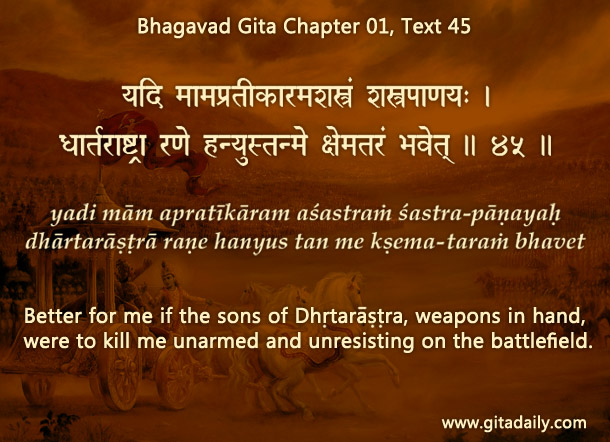Some people misconceive the Gita as a violence-inducing book in which God goads a peace-seeking person to fight. They laud Arjuna when he, instead of attacking his opponents, prefers non-violence, even if it leads to his death (01.45).
Given that our world is under the constant threat of violence and terrorism, which is often attributed to some religious texts, people’s apprehensions about the Gita are understandable. But they overlook the reality that the same mega-book, the Mahabharata, of which the Gita is a part, depicts God as actively peace-seeking. He personally goes to the opponents as a humble peace envoy and offers them peace on the most accommodating of terms. But they insolently rebuff him.
Violence against the malevolent comprised benevolence towards the innocent
To understand the context of the Bhagavad-gita’s call for action, we need to see beyond the material appearance of actions to their underlying intentions. Matter being unconscious does not feel or desire or intend. For example, when a gun is pointed at someone, it doesn’t intend to wound. That intent is present in the shooter. One shooter might be a criminal who shoots to rob, whereas the other might be a soldier who shoots to protect. So, those who judge actions as right or wrong based only on externals are prone to misjudge.
The Mahabharata’s pre-war section explains how Arjuna’s opponents, who are rampant anti-social elements, had no intention of listening to reason and had every intention of continuing their atrocities. To not check them would have been to license the rule of violence. In that situation, violence against the malevolent comprised benevolence towards the innocent.
The Gita at its core is a call for not violence, but enlightened benevolence that expresses itself appropriately according to time-place-circumstance: through war in Arjuna’s exceptional circumstances and in most other situations through nonviolent spiritual activism for individual and social improvement.
Explanation of article:
Podcast:


Leave A Comment